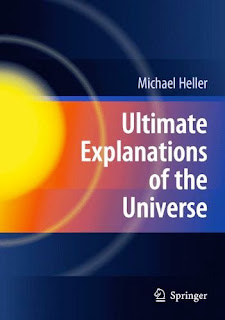 Why is there something rather than nothing? What was the origin of the universe? What is the future of the universe? Is the universe finite or infinite? Is our universe the only logically possible universe? Are there other universes? What is the relationship between life and the universe?
Why is there something rather than nothing? What was the origin of the universe? What is the future of the universe? Is the universe finite or infinite? Is our universe the only logically possible universe? Are there other universes? What is the relationship between life and the universe?These fundamental metaphysical questions have always exerted a fascination for mankind, but over the past hundred years physical cosmology has begun to provide scientific answers to these questions, answers formulated using well-defined mathematical concepts, and verified by astronomical observation.
In more recent decades, however, a sub-industry has developed which produces cosmological theories and models lacking any empirical substantiation. The audience for such highly speculative cosmology consists not only of physicists and cosmologists, but the public-at-large. There is a shop-front for this brand of cosmology, composed of popular science programmes on TV, books such as Stephen Hawking's Brief History of Time, and articles in magazines such as Scientific American and New Scientist.
There is a problem with the manner in which this type of cosmology is presented to the public, and it conforms with Ben Goldacre's characterisation of the way in which all science is treated by the media:
On this template, science is portrayed as groundless, incomprehensible, didactic truth statements from scientists, who themselves are socially powerful, arbitrary, unelected authority figures. They are detached from reality; they do work that is either wacky or dangerous, but either way, everything in science is tenuous, contradictory, probably going to change soon and, most ridiculously, 'hard to understand'. (Bad Science, p225).
Cosmology is presented in the media as being beyond the understanding of the public, and beyond their ability to engage in critical appraisal. The concepts and reasoning are rarely properly explained, and almost never subjected to critical analysis. In the case of speculative cosmology, the ideas are also presented in a credulous and philosophically naive manner.
As an antidote to this comes Ultimate Explanations of the Universe, the latest book by Michael Heller, Polish physicist, philosopher, priest, and winner of the million-pound 2008 Templeton Prize. The text offers a critical guide to all the big philosophical issues in cosmology: eternal universes, cyclic universes, the heath death of the universe, quantum creation out of nothing, inflation, the anthropic principle, cosmological natural selection, theories of everything, and multiverses. The text is quite dense, but the book is still accessible to anyone with an interest in such ultimate questions, and will assist non-specialists seeking to assess the metaphysical credentials of modern cosmology.





















